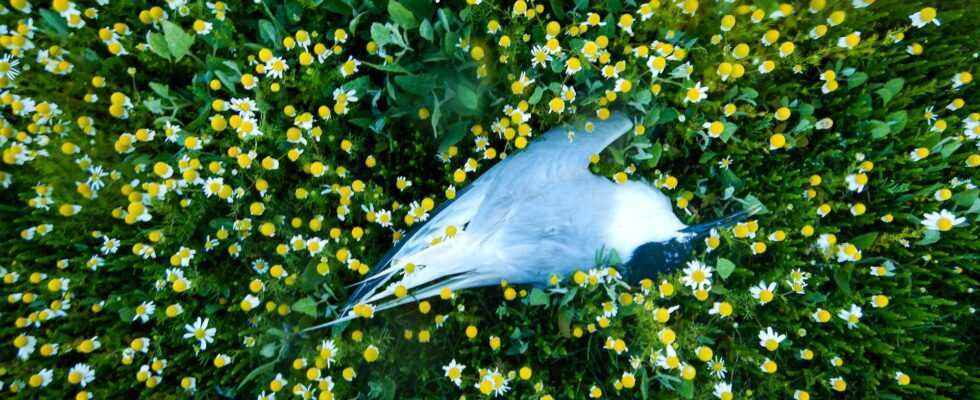The FLI expert on bird flu, Anja Globig, is even more cautious with this diagnosis. But it is clear that the virus survived last summer, says the expert. “However, a new entry about migratory birds has also been added, and in winter 2021 it has increasingly spread again in the waterbird populations.” The currently circulating virus type H5N1 “is so successful and now so prevalent in waterfowl that what is happening is not like in declined in the spring in previous years, but the viruses have now also been introduced into breeding bird populations of coastal birds in which there is a high density of birds in a small space where the viruses can circulate well,” Globig describes the new dimension.
© Susanne Kuehn (detail)
A scientist bends over a dead animal | Mardik Leopold helps collect dead sandwich terns on Texel. Scientists and conservationists watch in despair as the animals die.
According to the unanimous opinion of all experts, there is hardly anything that can be done against the current outbreak. Leopold urgently advises collecting all dead and dying birds immediately in order to curb the spread of infection. Other experts and authorities are hesitant, so as not to promote further contacts due to the birds’ concern due to frequent entry into the colonies.
Steffen Grüber, managing director of the Jordsand association for the protection of seabirds, calls for further consequences from the authorities, including “a more intensive investigation into the question of where the pathogen can come from and where the causes for the many outbreaks lie”. The outbreak also shows that more replacement habitats need to be created for bird species that breed in colonies. “We need more suitable breeding space so that the stocks are not limited to a few large and therefore vulnerable colonies and such sub-populations are not completely wiped out.”
FLI expert Globig sees a possible glimmer of hope: “One could hope that we would see a ‘pandemic’ among the birds that is taking place in waves, and we assume that the animals that survive form antibodies,” she says . “So things should actually calm down again in the next few years.” Unless, as Globig qualifies, “a new subtype emerges that breaks through the protective effect of the antibodies.” Then the animals would only have a weaker immune effect from the previous ones infections.
